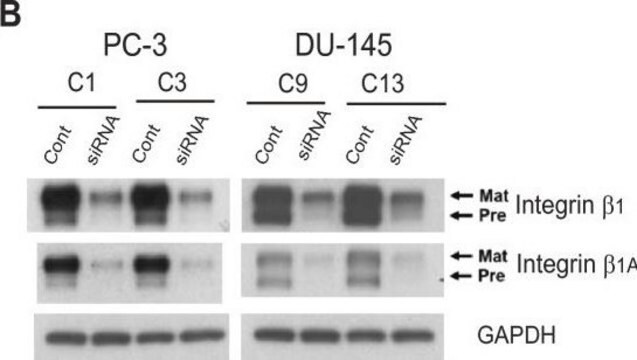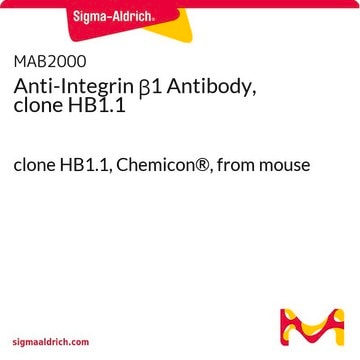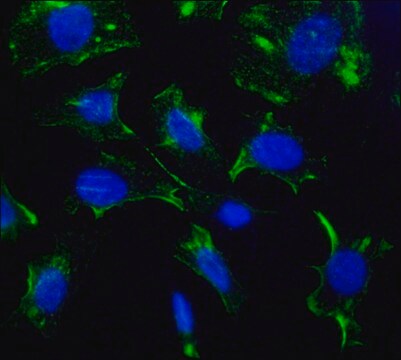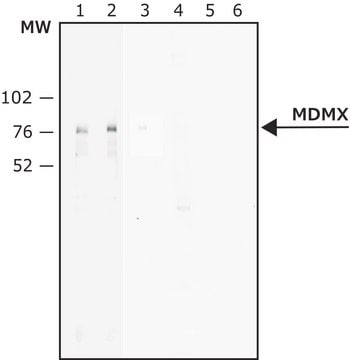MAB1965
Anti-Integrin β1 Antibody, a.a. 82-87, clone JB1A (a.k.a. J10)
ascites fluid, clone JB1A (J10), Chemicon®
Synonym(s):
CD29
About This Item
Recommended Products
biological source
mouse
Quality Level
100
300
antibody form
ascites fluid
antibody product type
primary antibodies
clone
JB1A (J10), monoclonal
species reactivity
human
manufacturer/tradename
Chemicon®
technique(s)
flow cytometry: suitable
immunohistochemistry: suitable
immunoprecipitation (IP): suitable
western blot: suitable
isotype
IgG1
NCBI accession no.
UniProt accession no.
shipped in
dry ice
target post-translational modification
unmodified
Gene Information
human ... ITGB1(3688)
General description
Specificity
Immunogen
Application
1:100 Note: epitope is trypsin sensitive; cells should be prepared with PBS + EDTA (2mM) or other non-enzymatic methods. Blocking will not occur with trypsinized cells with JB1A.
Immunoprecipitation: 1:250-500
Western blotting (reducing, 115 kDa; non-reducing, 130 kDa): 1:1000-2000
Note: binding of antibody may be inhibited by magnesium ion concentrations exceeding 0.5mM.
Immunocytochemistry/Immunohistochemistry: JB1A can be used on unfixed cells in flow cytometry and culture {Akimov, 2001; Blood 98(5):1567-1576}. Often times fixing with 2-3% PFA for 5 minutes after primary antibody incubation will assist in obtain strong signals since it fixes the primary antibodies to the tissues.
FACS: JB1A has been primarily used against live cells at 1:200-1:500 followed by goat anti-mouse conjugated secondaries
Optimal working dilutions must be determined by end user.
Cell Structure
Integrins
Target description
Physical form
Storage and Stability
Analysis Note
Human lung, liver, and skeletal muscle tissues
Other Notes
Legal Information
Disclaimer
Not finding the right product?
Try our Product Selector Tool.
recommended
Storage Class Code
10 - Combustible liquids
WGK
WGK 1
Flash Point(F)
Not applicable
Flash Point(C)
Not applicable
Certificates of Analysis (COA)
Search for Certificates of Analysis (COA) by entering the products Lot/Batch Number. Lot and Batch Numbers can be found on a product’s label following the words ‘Lot’ or ‘Batch’.
Already Own This Product?
Find documentation for the products that you have recently purchased in the Document Library.
Our team of scientists has experience in all areas of research including Life Science, Material Science, Chemical Synthesis, Chromatography, Analytical and many others.
Contact Technical Service








